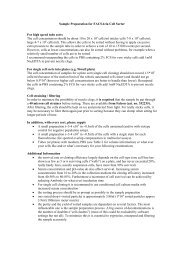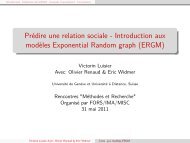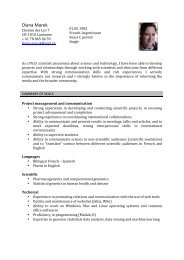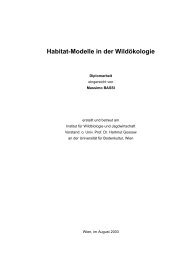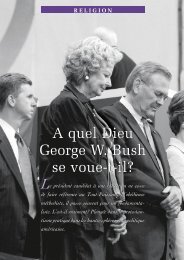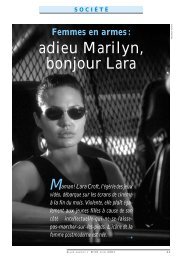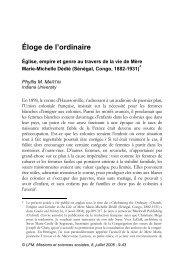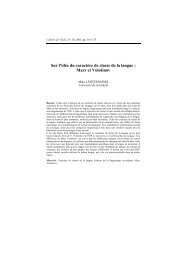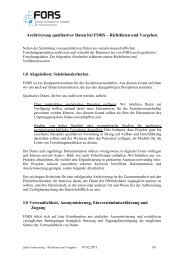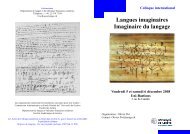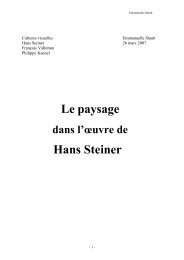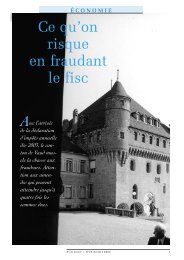conference programme book - European Survey Research ...
conference programme book - European Survey Research ...
conference programme book - European Survey Research ...
Create successful ePaper yourself
Turn your PDF publications into a flip-book with our unique Google optimized e-Paper software.
168 THURSDAY 21 JULY3.47.1 A Comparison of Branching Response Formats with Single Response FormatsR. Thomas 11 ICF Internaonal, United StatesUnlike single response formats that use a single dimension to measure atudes, the branching technique ofatude measurement separates the rang task into two different sequenal tasks for measuring bipolar atudes:direcon of atude (posive versus negave) and intensity of atude (strength). Some research (Malhotra,Krosnick, and Thomas, 2009, POQ) has indicated that superior outcomes are obtained with branchingthat has more arculaon (3 categories rather than 2 categories) on the endpoints rather than in the middle.However, no comparisons were made with single response formats and, further, the nature of the midpointmay have affected the results. We report here 2 studies comparing a number of branching alternaves, includinga consideraon of alternave middle responses, with a series of single response measures to determinerelave efficacy of the scales...3.47.2 Cross-country Comparisons: Effects of Scale Type and Response Style DifferencesR. Thomas 11 ICF Internaonal, United StatesResponse categories may be used differently as a result of ethnic background or country of residence. Whenmaking comparisons between countries, there are a number of factors (e.g. mode, demographics, etc.) thatmust be equated before we can aribute differences due to culture and not other factors. Scale polarity isone issue that can cause some differences between countries – bipolar scales may somemes be inappropriatelyrendered as unipolar scales (and vice versa) in translaons. In this study, we compared scale variants(e.g. unipolar versus bipolar) and extent of semanc anchoring (fully anchored versus end anchored scales) inleading to differences between countries. This experiment had 36,938 respondents from 6 different <strong>European</strong>countries complete a web-based survey on atudes and behaviors toward different acvies...3.47.3 Forced choice scales and Likert scales: a study about two different ways to ask quesonsD. La Sala 11 Università degli Studi di Firenze , ItalyThe paper presents the results of part of a broader study, aimed at evaluang the capacity of two differenttechniques, Likert scale and forced choice scale, in measuring the same traits (atude towards violaon oflaw, environment respect and the death penalty.3.48 Analyzing <strong>Survey</strong> Data - New Methodologies ITo be held on July 21, 2011 from: 16:00 to 17:30, in room 340.Coordinated by: Jean-Marie Le Goff - University of Lausanne, Switzerland3.48.1 Sequenal Logit Models with Unobserved Heterogeneity: Latent Class Esmators for Large andSmall SamplesH. Tam 11 Chinese University of Hong Kong, ChinaThe sequenal logit model or the sequenal response model has long been an influenal framework for modelingsequenal transions, decisions, or any other nested events. For instance, it has been the dominantmodeling framework for the study of inequality of educaonal opportunity ever since the seminal works ofMare (1980, 1981). But convenonal applicaons of the model to esmate causal effects or structural parametersare known to be biased by the ubiquitous presence of unobserved heterogeneity. In a widely citedpaper, Cameron and Heckman (1998) show that sequenal logit models are generally biased and unidenfied.



